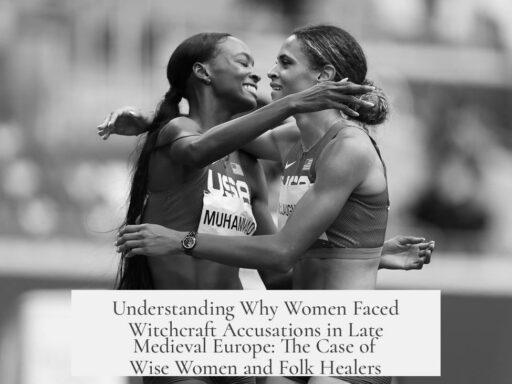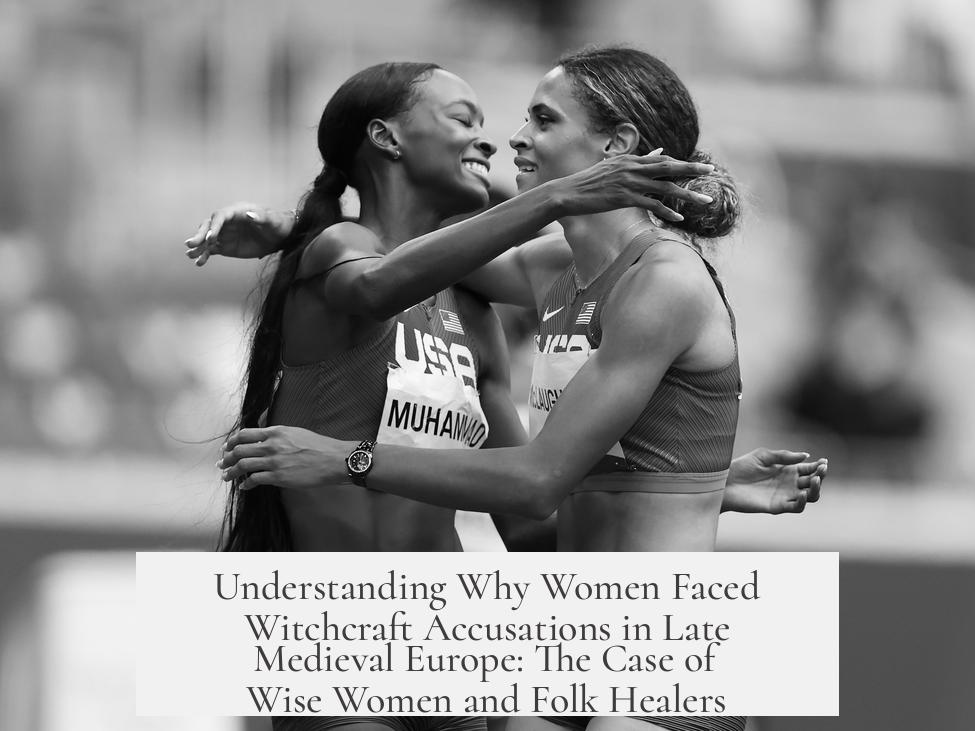Certain women in Late Medieval Europe were often accused of witchcraft due to a mix of social, gender, and cultural reasons, with many of the accused fitting the role of “wise women” or folk healers. These accused women typically held domestic and healing roles, especially midwives and folk medicine practitioners. Their close involvement in childbirth and medical recipes made them susceptible to blame when illness or death occurred. Social tensions and fear led to accusations, especially after disputes where a woman might curse or threaten another in anger.

Witchcraft accusations were predominantly directed at women in England and Scotland, while in German regions, witch panics involved men and children as well. Women’s societal roles intertwined with domestic life. They filled healer roles through “recipes” or remedies, which were not formalized but relied heavily on tradition and experience. When these remedies failed or a child died, midwives or “wise women” were prime targets for blame.
Gender biases heightened vulnerability to accusations. Women were regarded as more easily influenced by the devil. Older women, no longer bearing children, were seen as less valuable and more suspicious. Social status and perceived weakness played into their targeting.

Minor social conflicts often escalated accusations. If a woman expressed anger or made a warning during an argument, and subsequent misfortune affected the other party, this was often enough to trigger suspicion. Communities were quick to connect curses and illnesses to witchcraft.
The term “wise woman” was loosely defined but central to understanding witchcraft accusations. It referenced women with practical knowledge of healing and childbirth. This supports the idea that many accused women were folk healers. They were caught between their necessary social functions and the fears that their knowledge could be harmful or malevolent.

| Factor | Impact |
|---|---|
| Domestic and healing roles | Increased suspicion when illness or death occurred |
| Gender biases | Women seen as weaker and more prone to devil’s influence |
| Age and social status | Older women viewed as less valuable and suspect |
| Social disputes and curses | Minor conflicts could lead to witchcraft accusations |
| “Wise woman” role | Many accused women were folk healers with healing knowledge |
- Accused women often held domestic and healing roles, especially midwives.
- Gender and age biases increased suspicion of women, especially the old.
- Social tensions and misfortunes frequently escalated to accusations.
- The “wise woman” label reflects a tradition of folk healing tied to many accused.
Is There an Agreed Reason Why Some Women Were Accused of Witchcraft in Late Medieval Europe? And Were They Just “Wise Women” and “Folk Healers”?
The short answer: There is no single, agreed-upon reasoning for why certain women faced witchcraft accusations in Late Medieval Europe, but many historians agree that these accusations often targeted women involved in healing and domestic care, whose knowledge both empowered and endangered them. So, were these accused women mostly just “wise women” and “folk healers”? The evidence leans heavily in that direction, making the whole witch-hunt story even more tragic.

Let’s unpack this complex historical puzzle by separating myths from facts, exploring social dynamics, and understanding the broader cultural backdrop.
Witch Trials: Medieval or Renaissance Drama?

First, a common misconception: the famous witch hunts are often thought to belong to the Middle Ages. Actually, the greatest flurry of witch trials hit in the Renaissance—late 16th to early 17th centuries. So, if you picture witches burning during black-plague-ridden medieval nights, that’s a bit off timeline.
Witchcraft beliefs did exist in the medieval period, but large-scale persecutions mostly blossomed later. This timeline matters because social structures and gender roles were evolving rapidly then, setting the stage for witchcraft accusations.

How Local Beliefs Shaped Witch Accusations
Europe was not a monolith. Witch hunting practices varied from place to place. In England and Scotland, the idea that witches consorted with the devil, had familiars like cats, and flew on broomsticks dominated the narrative. Germany brought us the notorious notion of the “sabbat”—a devilish party where witches allegedly flew off to cavort with demons!

This means the reasons women faced accusations depended greatly on where they lived. So, pinning down one “why” across Europe is like trying to catch smoke.
Why Women Were Especially Vulnerable
One can’t ignore gender here. Women were disproportionately targeted during English and Scottish witch trials. In German regions, men and even children were caught up in panics, but women still were prime targets.
Why women? Society linked women to the domestic sphere—childbirth, medical care at home, and folk remedies. These roles made women both vital and suspicious. Midwives, for example, faced suspicion whenever a child died, which, tragically, was often.
Women were also perceived as morally weaker, more apt to be seduced by evil. Older women, especially those past childbearing, were further marginalized, lacking social value, which made accusations against them easier.
Wise Women and Folk Healers: The Real Story?
Women often held secret medical knowledge. Their “recipes” and remedies, passed orally or handwritten, were foundational to community health care. But this very expertise could backfire.
If a remedy failed or a sudden illness struck after an argument, a woman might find herself branded a witch. Sometimes, merely uttering a curse-like phrase in a spat was enough to spark suspicion. Think of it: neighbors afraid of diseases they didn’t understand, deaths blamed on curses, and a convenient scapegoat right there in the village.
These “wise women” were a blend of healer, midwife, and community counselor. When medicine failed, or someone wanted revenge, their knowledge was twisted into evidence of evil magic.
The Pact with the Devil and Witchcraft Imagery
The dominant belief underpinning witch persecutions was that witches made a pact with the devil. This grim contract supposedly gave witches supernatural powers but required allegiance to evil.
Animals, often cats, were said to be witches’ familiars, demonic helpers. The idea of witches flying on brooms, linked to “the sabbat” traditions of Germany, left a lasting image in popular culture. These notions were less about real healing practices and more about fears of devil worship—a narrative that suited social control demands.
Is It Fair to Call Them Just “Witches”?
Considering all this, can we chalk up witch accusations to mere superstition gone wild? Partly. But these accusations also reflected deeper social struggles—fear of powerful women, changing gender roles, and community tensions.
In many ways, “wise women” and “folk healers” became victims of society’s anxieties. Their skills were misunderstood or resented, especially when something went wrong or conflicts arose.
What Can We Learn From This?
It’s easy to dismiss accused witches as deluded or evil. But history reveals a more nuanced picture. These women often carried vital knowledge and served essential roles in healthcare long before science took over.
Today, understanding why women were accused teaches us about fear, power, and scapegoating mechanisms still relevant. It calls us to value community knowledge while questioning easy targets in times of crisis.
Final Thought: A Call for Nuance
The witch hunts were a complex mix of religion, gender biases, fear, and misunderstanding of natural events. Sure, there wasn’t one neat explanation for every accusation. But studying the overlap between accusations and women’s roles helps us see that many “witches” were often just healers and helpers caught in a storm of superstition and social fear.
Next time you hear about medieval witches, remember: behind the scary tales were real women, with real skills, who paid a high price for being different or simply knowledgeable.




